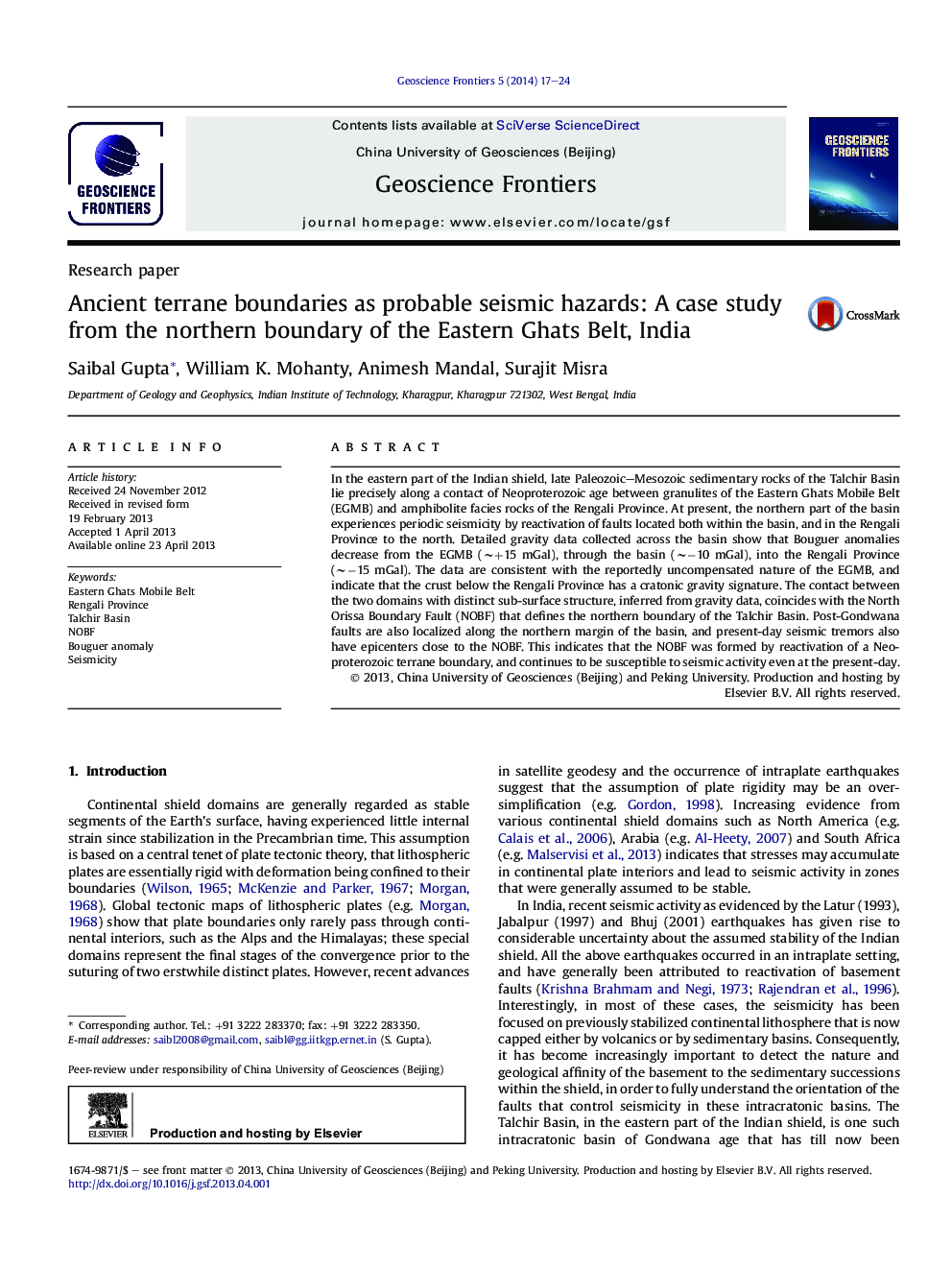| Article ID | Journal | Published Year | Pages | File Type |
|---|---|---|---|---|
| 4681755 | Geoscience Frontiers | 2014 | 8 Pages |
► Northern boundary region of Talchir basin experiences recurring earthquakes. ► This coincides with the Proterozoic suture zone between EGMB and Rengali Province. ► Gravity studies indicate contrasting subsurface structure across this boundary. ► Post-Gondwana faults also follow this contact. ► Thus, these faults are being repeatedly reactivated from the Proterozoic till today.
In the eastern part of the Indian shield, late Paleozoic–Mesozoic sedimentary rocks of the Talchir Basin lie precisely along a contact of Neoproterozoic age between granulites of the Eastern Ghats Mobile Belt (EGMB) and amphibolite facies rocks of the Rengali Province. At present, the northern part of the basin experiences periodic seismicity by reactivation of faults located both within the basin, and in the Rengali Province to the north. Detailed gravity data collected across the basin show that Bouguer anomalies decrease from the EGMB (∼+15 mGal), through the basin (∼−10 mGal), into the Rengali Province (∼−15 mGal). The data are consistent with the reportedly uncompensated nature of the EGMB, and indicate that the crust below the Rengali Province has a cratonic gravity signature. The contact between the two domains with distinct sub-surface structure, inferred from gravity data, coincides with the North Orissa Boundary Fault (NOBF) that defines the northern boundary of the Talchir Basin. Post-Gondwana faults are also localized along the northern margin of the basin, and present-day seismic tremors also have epicenters close to the NOBF. This indicates that the NOBF was formed by reactivation of a Neoproterozoic terrane boundary, and continues to be susceptible to seismic activity even at the present-day.
Graphical abstractFigure optionsDownload full-size imageDownload as PowerPoint slide
